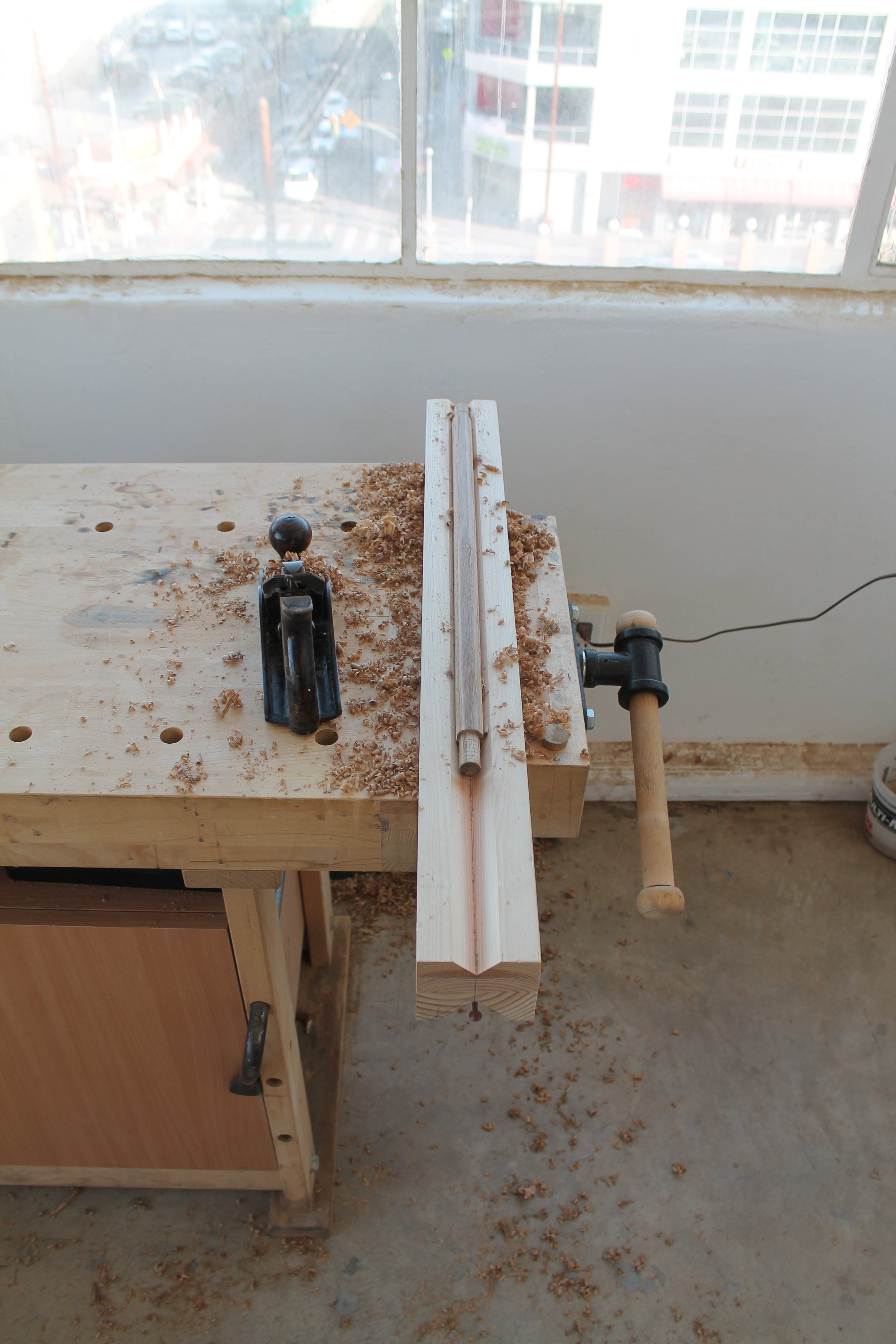One of the toughest things for a small furniture designer/maker to master is production and all it entails; efficiency, pricing...uh, well that about covers it really. I suppose what it comes down to is figuring out how to make the same piece over and over quickly enough for it to make economic sense (so you don’t have a $3,000 dining chair on your hands), while maintaining quality and-this is very important-some sense of enjoyment in the work. No one wants to be an automaton making the same cut on the table saw 100 times a day or any such nonsense.
roughing out a spindle on the table saw
For me this has always meant employing hand tools wherever I can. They’re quiet for one thing-I can hear my music-but they also impart a connection to the work that’s hard to replicate with a machine. Like riding a bicycle versus driving a car. Then there’s quality; it’s difficult-some would say impossible-to produce work of a level that well tuned hand planes, spokeshaves and scrapers can achieve with an orbital sander. It’s an altogether different product that I’m not really convinced the average consumer notices, but I’d rather plane and scrape any day than stand around with a noisy sander. Then there’s the freedom hand tools give their user; one could either set up a bunch of router jigs and shape a chair seat with exacting means, or they could sculpt one with an adze and travisher.
fine tuning with the smoothing plane
The key though is to find the balance between the two. Some guys seem to be capable of making work quickly and efficiently with hand tools alone; I’m not one of them. Others are content to run machines all day long and take great joy in bringing the production time of a piece down by nano increments-which would drive me crazy, although I’d probably make better money. But I truly believe-even in the age of the CNC mill and the 3D printer and the Konig coffee maker (well, I guess we’ve had those for a while, but still very impressive) that there is room for the hand made good. I mean truly hand made; as in taking a piece from the milling equipment and shaping it with one’s own hands before assembly, by hand.
A good designer-maker strikes that balance. They know just how much of the process to run through on the machines before heading over to the workbench to fine tune-not spend all day removing a bit of wood that could have been done in 5 minutes on the bandsaw. Instead making use of the bandsaw, then sharpening the spokeshave and taking those final shavings that make the workpiece shimmer. I think this is very important, this preservation of the human touch in the manufacturing process. It’s easy to write off such thoughts as over romantic, but someone has to carry the torch-to keep making usable items that people interact with in daily life-by hand.
I've been thinking a lot about all this lately while making an order of one of my chairs. The subtleties that can save an hour here or there and the adjustments made in technique that make the process much more enjoyable. I had 30 spindles to shape for the chairs backs-which would be a bore on the lathe and take for ever with just knives and shaves. So I settled on a combination of table saw work and hand tools. I cut the round tenon with a special setup on the table saw, then turned the square spindle into an octagon by setting the blade at 45 degrees and taking all the corners off. All this didn't take much more than an hour. Then I carried the sticks over to the bench and went about finessing them into their final shape with the planes and shaves. It's all a lot of fun, much more than it sounds anyway.
I'll post updates on the chairs in the coming days.
cutting the taper with drawknife and spokeshave
the finished spindle




